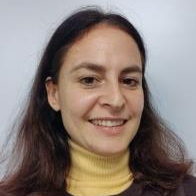Lectures on Recent Experimental Achievements in Quantum-Enhanced Technologies
A special issue of Entropy (ISSN 1099-4300). This special issue belongs to the section "Quantum Information".
Deadline for manuscript submissions: closed (20 March 2023) | Viewed by 5514
Special Issue Editors
Interests: quantum complex networks; continuous variables; quantum information; multimode quantum optics; non-Gaussian quantum states; foundations of quantum mechanics
Interests: integrated quantum photonics; quantum metrology; photonics quantum information processing; foundations of quantum mechanics; quantum machine learning
Special Issues, Collections and Topics in MDPI journals
Interests: quantum correlations; entanglement; open quantum systems; quantum information; foundations of quantum mechanics; identical quantum particles
Special Issues, Collections and Topics in MDPI journals
Special Issue Information
Dear Colleagues,
Since the idea of exploiting quantum computation to simulate quantum systems was first formulated by Feynman in his 1982 publication, Simulating Physics with Computers, the scientific community has been going through striking developments towards achieving that goal. Thanks to theoretical and technological progress, quantum information protocols have been implemented in many experimental platforms using different types of quantum building blocks in a noisy intermediate-scale regime. The race to build fully efficient and large-scale quantum technologies remains challenging and requires precise control of quantum resources within the composite systems, mitigation of environmental noise, and quantum error correction codes.
Nonetheless, impressive results have been achieved in laboratories to prove that the performance of tasks such as computation, communication, information processing, secure key distribution, complex system simulation or sensing, can outperform classical procedures due to suitable utilization of quantum features. Quantum advantage has thus become a reality.
This Special Issue will gather concise yet informative reviews from the laboratories around the world concerning the most recent experimental achievements and breakthroughs in the quantum technology scenario. This will ultimately serve as a useful, easy-to-read compendium of state-of-art setups and techniques for implementing quantum-enhanced tasks.
Prof. Dr. Valentina Parigi
Prof. Dr. Fabio Sciarrino
Dr. Rosario Lo Franco
Guest Editors
Manuscript Submission Information
Manuscripts should be submitted online at www.mdpi.com by registering and logging in to this website. Once you are registered, click here to go to the submission form. Manuscripts can be submitted until the deadline. All submissions that pass pre-check are peer-reviewed. Accepted papers will be published continuously in the journal (as soon as accepted) and will be listed together on the special issue website. Research articles, review articles as well as short communications are invited. For planned papers, a title and short abstract (about 100 words) can be sent to the Editorial Office for announcement on this website.
Submitted manuscripts should not have been published previously, nor be under consideration for publication elsewhere (except conference proceedings papers). All manuscripts are thoroughly refereed through a single-blind peer-review process. A guide for authors and other relevant information for submission of manuscripts is available on the Instructions for Authors page. Entropy is an international peer-reviewed open access monthly journal published by MDPI.
Please visit the Instructions for Authors page before submitting a manuscript. The Article Processing Charge (APC) for publication in this open access journal is 2600 CHF (Swiss Francs). Submitted papers should be well formatted and use good English. Authors may use MDPI's English editing service prior to publication or during author revisions.
Keywords
- quantum technology
- quantum optics
- quantum simulation
- noisy intermediate state quantum devices
- quantum computer
- quantum communications
- integrated quantum photonics
- logic quantum gates
- circuit QED
- trapped ions
- quantum metrology
- quantum error correction








